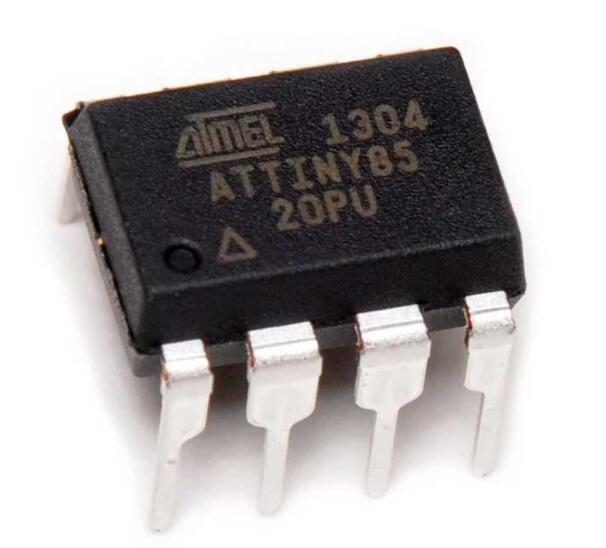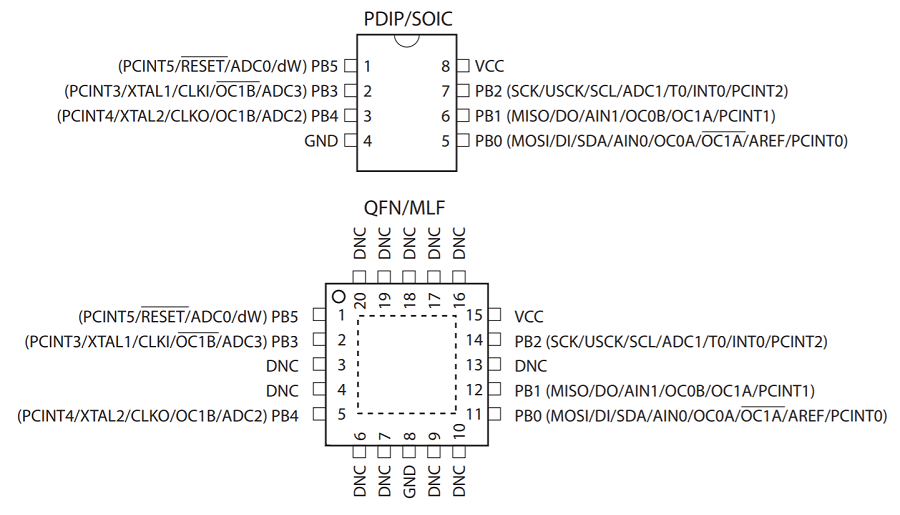The ATtiny85 is a popular 8-bit AVR microcontroller manufactured by Microchip Technology (formerly Atmel). Below is information about the pinout, main functions, application areas, and some alternative models you can consider:

ATtiny85 Pinout:
The ATtiny85 typically comes in a 8-pin DIP (Dual In-line Package) form factor. Its pinout consists of the following pins:
- Reset (PB5) - Reset pin.
- Digital I/O Pin 0 (PB0) - General-purpose digital I/O pin.
- Digital I/O Pin 1 (PB1) - General-purpose digital I/O pin.
- Digital I/O Pin 2 (PB2) - General-purpose digital I/O pin.
- Digital I/O Pin 3 (PB3) - General-purpose digital I/O pin.
- Digital I/O Pin 4 (PB4) - General-purpose digital I/O pin.
- Ground (GND) - Ground pin.
- VCC (VCC) - Supply voltage pin.

Main Functions:
-
Low Power Consumption: The ATtiny85 is known for its low power consumption, making it suitable for battery-powered applications.
-
8KB Flash Memory: Sufficient memory for small embedded projects and IoT applications.
-
6 I/O Pins: Provides enough flexibility for various projects.
-
PWM (Pulse Width Modulation): Allows for hardware PWM output on certain pins.
-
ADC (Analog-to-Digital Converter): Capable of analog input readings for sensor interfacing.
ATTINY85 Datasheet
Download ATTINY85 Datasheet PDF.
Application Areas:
-
Embedded Systems: Used in various embedded systems and IoT projects.
-
Wearable Devices: Ideal for low-power wearable electronics applications.
-
Sensor Nodes: Common in sensor nodes and data logging applications.
-
DIY Electronics: Popular choice for hobbyists and makers due to its small size and versatility.
Alternative Models:
-
ATtiny45: Similar to the ATtiny85 but with fewer I/O pins and a smaller memory size.
-
ATtiny2313A: Offers more I/O pins and features but in a larger package.
-
ATtiny84: Has more I/O pins and memory compared to the ATtiny85, suitable for more complex projects.
-
ATmega328: More powerful than the ATtiny series, commonly used in Arduino boards.
When choosing a microcontroller for your project, consider factors such as required I/O pins, memory size, processing power, and peripherals to ensure the chosen microcontroller meets the specific requirements of your application.



